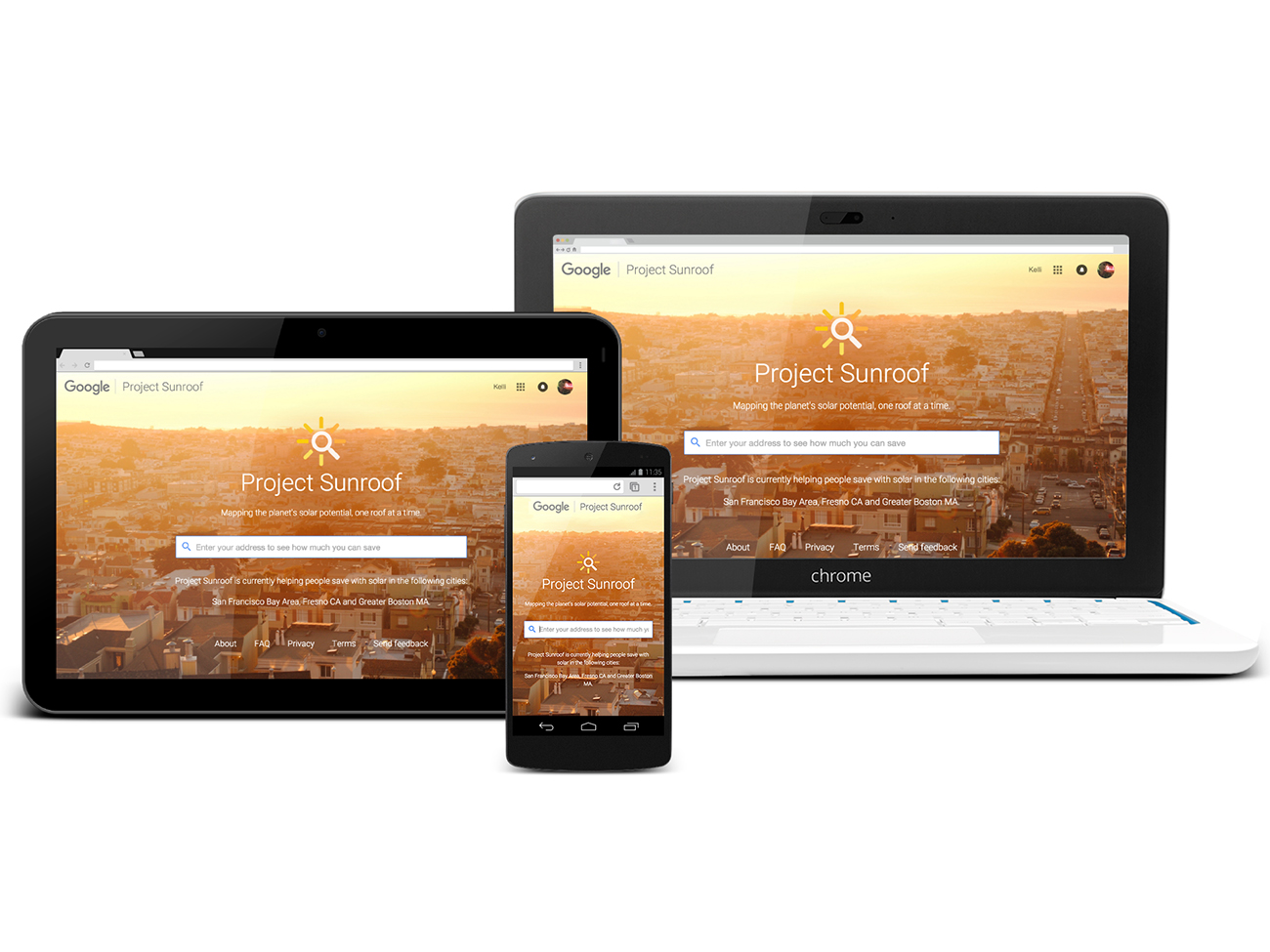Some people go to work every day to take home a paycheck. And some people go to work to make a difference in others’ lives. Adam Katz is definitely part of the latter group.
Throughout his career, Adam has pushed himself to bring ideas to life in creative, purposeful ways. From print designer to creative consultant to creative lead at Google Creative Lab, he’s focused on developing user-centered solutions in any and every situation.
I had the opportunity to chat with Adam about his career path, Master’s program at the School of Visual Arts, the changing role of designers within organizations, and the power that comes from making things. You can also learn more about Adam’s work on his website.
How did you end up in the design world?
AK: I originally went to college to be a painter. I was always really into art and design in general. My dad is an architect—he makes signage for wayfinding systems, so I had a root in planning and design. But as I went through school, I realized I really wasn’t that good at painting, so I started looking for something else to link my creativity to.
I always knew that I wanted to make stuff for people to use. Design seemed like the best way to get my ideas out there, so I kind of happened into becoming a graphic designer by trade.

Creative concept for OnHub Makers
I started my career doing a lot of branding and print design, but eventually, I got fed up with the process. Things took way too long to make—and when you make a book, if something changes, you’re screwed because you can’t go back and change it until the next print run.
I went back to school 6 years ago to get my MFA in Design as Entrepreneur at the School of Visual Arts, and it was probably the best decision I’ve ever made. I always thought I had good ideas for new products or designs, but I didn’t really know how to pursue them. I always made excuses—I didn’t know how to get started, or someone else would be better making them than me. At some point, I really got frustrated with that.
SVA taught me that as a designer, you’re an entrepreneur, and that means you have power. You can make things without worrying about the consequences so much.
When I got out of school, I ran my own consulting company working with startups for a short time. I had plans to pursue my own startup, but then Google came calling—and you can’t really say no to Google. I’ve been there ever since.
How did your time at SVA impact your career?
AK: It was a really eye-opening program. Up until that point, I never really thought of myself, being a designer, as having a voice or a say in things. People just told me what to do, and I made things look pretty. I got over this quickly, which was part of my frustration with graphic design early in my career.
The program really educated me on the power of design to change things. Design thinking was also a hot topic when I was there, which was all about taking a holistic approach to developing solutions to complex problems. I found a root in this belief.
Getting exposure to that world made me understand what design can really do. Being a designer doesn’t just mean I push pixels or choose nice typography. Designers can—and should—do anything.
One of the best parts about the MFA program is that it’s extremely international and small. My teachers were creatives I really admired who had their own studios and started their own companies. It was a great experience to learn from and work with them.
Tell me a little bit about your project Laugh-Track.
AK: My studies at SVA were pretty open-ended. You work on your thesis, which is a product you want to bring to market. I wanted to do something that wasn’t too serious, something I would have fun with, so I turned to comedy.
Behance is an online community for creatives to share their work with one another and potential employers. Laugh-Track is a similar concept for comedians, where people can share their work and create a unique profile in a community of like-minded creatives. It also had a lot of similarities with Bandcamp, connecting talent with comedy clubs and other entertainment organizers. People could self publish and put content up as well. Comedy is an art form just like music or film or design, and it deserves a better stage.

Laugh-Track, Adam’s comedy community
I still love the idea, but after graduation, I got sidetracked by real life. I still think about the project a lot and would like to pick it up and move it forward without falling victim to my previous ways of thinking.
What does your role entail at Creative Labs?
AK: What I do now as a creative lead is essentially total user experience design, meaning that I think about an idea from the start before it’s an idea. It’s my job to give that idea shape and explain it to other people, showing what it could become over time. Further down the line, I often can sweat the details in terms of visual branding and design or get someone off on the right path with this.
I think about those great brand moments in the life of a user, not just how they use something at the start but how things can get better down the road as someone continues to use something and then turning users into evangelists for the product. It’s really all about creating those magic moments for users that they can latch onto—not just that first moment, but the moments they’ll come back to again and again.
Google Expeditions is one of the projects Adam is most proud to have worked on.
A big part of design success at Google and to me personally is getting people excited to work on something and use their creativity on something as well, letting their ideas shine. My approach is to paint a picture of what something could be, and then see what others can add to that picture.
What were your takeaways from designing a VR product?
Virtual reality is one of the hardest mediums I’ve ever designed for because you can’t control where people are looking or how they will behave which is different from other forms of interaction design. It’s a very exciting area. There’s a lot of possibility, and no one’s quite sure where it’s heading. But I imagine whoever cracks that nut from a UX perspective, developing the design thinking that powers the simplest and clearest VR apps, will win long term.
Where does storytelling sit in your design process?
AK: I think writers are some of the best designers, and designers are some of the best writers. Storytellers can help bring a conceptual design to life with words. With any project, I try to get the writers involved as early as possible.
One of the best techniques I’ve used working at Creative Lab is starting each project with a poster. It sounds like a strange thing to do, given we’re a tech company, but it really does help to put that one key image and statement for a project in a single graphic. Writers play a key role in distilling the essence of the story for this poster.
A sample poster for an upcoming project at Ceros
This practice goes back to the basics of design: A poster is the clearest form of communication. It has to work from a visual standpoint so people can understand who can’t read, and it also has to work from a verbal standpoint to clarify the visual. We always come back to this poster as the driving mechanism for each project. It’s great because if there’s a writer or designer or coder who’s going to work on a project down the line, they can look at the poster and feel inspired, or know that what they’re adding on is going to go back to the mantra for the project.
What advice would you give to designers just starting off in their career?
AK: Keep making things as much as possible. As a designer, the more you make things, the more you learn from your mistakes and evolve. Don’t be afraid and don’t overthink things—you don’t have to write a business plan for everything.
Sometimes, it’s best to just get an idea out there and see how people react to it.
Whatever your passion is, put as much energy and time into that as you do into your career. There’s likely a whole community or even region of the world that will be interested in what you’re doing. You’re not alone out there.
There’s a lot of opportunity for creative work, especially in today’s connected world. Say, for instance, you wanted to design a specialized kind of guitar. When you start out, you may feel isolated in your work. But along the way, as you share about your progress, you might connect with a group of people who could benefit from what you’re doing and support your idea. The internet can help you discover those people and develop a real audience for what you do.
What design trends do you think will persist in the future as media change?
AK: These days, I don’t think I’m as good of a graphic designer as I was when I first started. Kids who are coming out of school and using the latest design software are doing great work. When I look around, a lot of stuff looks really good out there, but that’s not really where my interest lies any more.
Today, anyone can make anything look good with the right tools or coding skills. I’m less interested in designing beautiful things and more interested in design from a communication perspective. I tend to focus on whether I’m making the best decisions, creating the best tools, and giving people the clearest ways to get the information they need.
Good design comes from a focus on problem solving.
For example, if a company wanted to create a tool to help people call an ambulance, which app is going to win? Is it the most beautifully designed app, or is it the app with the clearest, simplest user experience that helps the user solve their problem? To me, the best (and most interesting) app is the one that solves the problem, not the one that simply looks good.
Credit: All art (except animated poster) courtesy of Adam Katz.
 hbspt.cta.load(403603, ’90c77495-f7ed-4bd6-a47f-0e033381ac7b’);
hbspt.cta.load(403603, ’90c77495-f7ed-4bd6-a47f-0e033381ac7b’);


